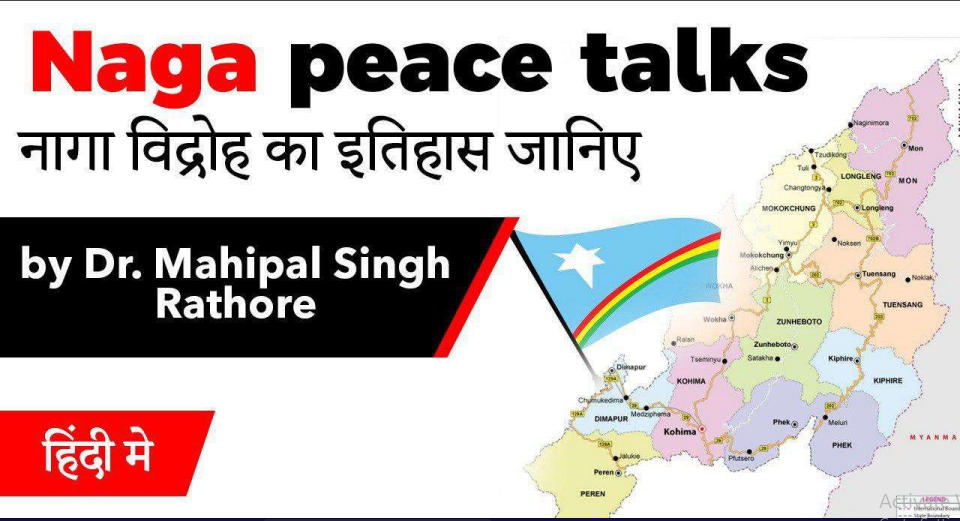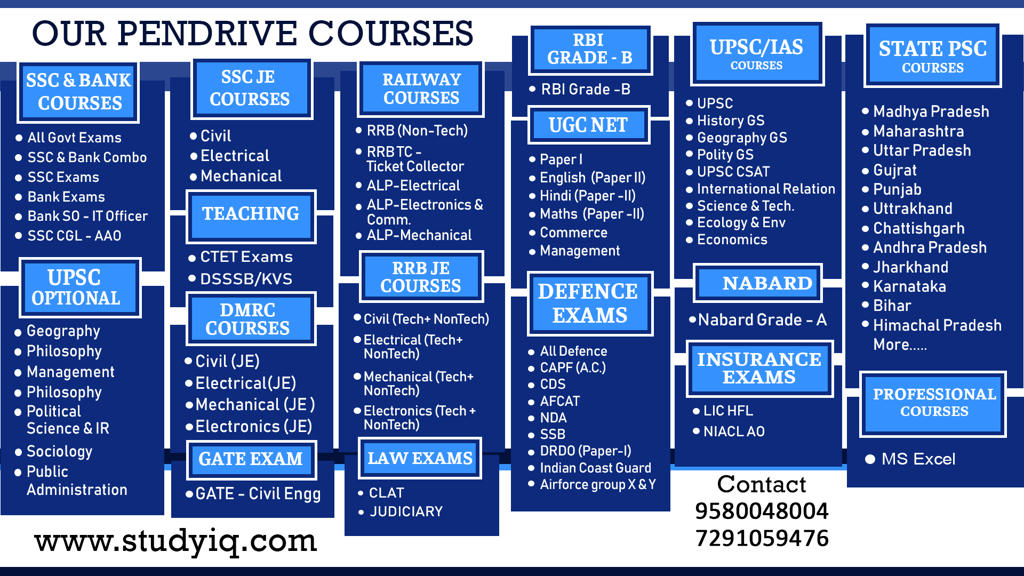Table of Contents
Naga Peace talks
- August 2015 – Framework agreement signed by Government of India with NSCN (IM) .
- Full details of the deal were not disclosed.
- In 2019 – 31st October was set as deadline. No final agreement reached yet.
- Nagaland state has an area of 16,579 square kilometres with a population of 1,980,602 (2011)



The British times
- The Nagas are the inhabitants of the Naga Hills in the eastern Himalayas, along the Burma border.
- Nagas consist of many tribes speaking different languages.
- After taking control over Assam in 1826, Britain steadily expanded its domain over Naga Hills by 1892.
- There was a virtual absence of any political, cultural, social, geographical, religious or business contact of the tribals in the North-east with the rest of India.
- So India’s freedom struggle had very little impact on the tribals.
The beginnings of Naga nationalism
- 1918 – Naga Club This club provided the socio-political foundation for the Naga nationalist movement.
- 1929 – The Club submitted a memorandum to the Simon Commission, requesting that the Nagas should be given a choice of self-determination after the British departure from India
- In April 1945, the Naga Hills District Tribal Council was established as a forum of the various Naga groups in the district.
- In February 1946, it was reorganized as a political organization called Naga National Council (NNC)

The NNC and Phizo phase (1947- 1975)
- The NNC initially demanded autonomy within the Indian Union and a separate electorate.
- However, later, under the leadership of Angami Zapu Phizo, it adopted a secessionist outlook and campaigned for the creation for a sovereign Naga state.
- The first and the most significant insurgency started in Nagaland under the leadership of Phizo in the early 1950s.
- Aug 14, 1947: NNC declares independence
- 1952 onwards – Violence begins as talks between Nehru and Phizo failed.
- 1956: Phizo creates underground Naga Federal Government (NFG) and Naga Federal Army (NFA). They launched an armed rebellion.
- 1958: Armed Forces (Special Powers) Act enacted for Naga Hills District
The Armed struggle subsides
- Govt of India negotiated with other leaders (moderates) from 1957 and they were successful in getting the demand of Nagaland state fulfilled.
- Article 371 A – guaranteeing Naga customary laws will be honoured
- Nagaland was created in 1963 as the 16th state of the Indian Union, before which it was a district of Assam.
- The secessionist movement declined to a great extent after the formation of Nagaland , with the Naga leader P. Shilu Ao as its chief minister.
- Several Naga rebel groups continued the insurgency, but the scale of violence decreased considerably.
- The NNC declined as differences developed between Phizo and other leaders emerged.
The Shillong Accord 1975
- Signed between GoI and NNC leadership
- The representatives of the underground organisations to accept, without condition, the Constitution of India.
- It was agreed that the arms, now underground, would be brought out and deposited at appointed places.
- It was agreed that the representatives of the underground organisations should have reasonable time to formulate other issues for discussion for final settlement.
The NSCN era (1980 onwards)
- NNC’s Vice President Isak Chishi Swu and General Secretary Thuingaleng Muivah denounced the Accord, calling it a “complete sell-out of the Naga rights“
- The National Socialist Council of Nagaland (NSCN) was formed in January, 1980 by Isak Chishi Swu, Thuingaleng Muivah and S.S. Khaplang opposing the Shillong Accord signed by the then NNC
- In many areas of Nagaland, NSCN runs a parallel government.
- There are four major ‘Ministries’ – defence, home, finance and foreign.
- The outfit has also established a government-in-exile called the Government of the People’s Republic of Nagaland (GPRN)
Nagalim
- Their motto was to create sovereign Nagalim
- unifying all the Naga-inhabited areas in the North-eastern region of India and northern Myanmar.
- The map of Greater Nagalim in the NSCN(IM) vision covers a 1,20,000 sq km area .
- The area of Nagaland state itself is only 16,579 sq km, a fraction of this vision. **Map for representative purposes only

The Insurgency wanes
- 1988 – NSCN Split into NSCN (IM) and NSCN(K)
- Death of Phizo in 1990 in London –NNC further splits and weakens
- 199Os – Constant efforts by GoI leads to meeting of 2 Prime Ministers with NSCN leaders .
Ceasefire agreement – 1997
- The NSCN(I-M ) signed a ceasefire agreement with the government in 1997. Multiple rounds of talks had been ongoing since 1995.
- The key agreement was that
- There would be no counter-insurgency offensive against the NSCN(I-M) by Army .
- NSCN would not continue attacks against the Army
The ‘Integration’
- The NSCN (IM) has been passing its annual budget to the tune of Rs 200 million to Rs 250 million.
- Multiple businesses owned as fronts by NSCN leaders and cadres across Nagaland, Assam and other parts of India .
The 2015 Framework agreement
- The Government of India recognised the unique history, culture and position of the Nagas and their sentiments and aspirations.
- The NSCN (I-M) understood and appreciated the Indian political system and governance.

Current scenario (2019)
- Today, Muivah remains the senior-most Naga rebel leader.
- Isak died in 2016.
- In the NSCN(K), its leader Khaplang died in 2018.
- NSCN (K) further weakened by splits and actions of Myanmar army. (Almost* irrelevant in India)
- NSCN IM has an estimated 4,500-strong cadre base as of now.
Spanner in the works
- NSCN(I-M)- “Nagaland State does and will not represent the national decision of the Naga people.”
- Naga areas in the adjoining states of Manipur and Arunachal Pradesh would be converted into satellite territorial councils and NOT INTEGRATE with Nagaland
- In 2017, six other Naga armed outfits under the banned of the Naga National Political Groups (NNPGs) joined the talks. (Now 7)
- In October 2019 , 18 NSCN functionaries joined NNPG, slamming NSCN’s stand and asking for early resolution .
What are problematic issues?
The government and the NSCN(I-M) have failed to agree on issues relating to
- A separate Naga flag
- A constitution.
- In its latest statement, the NSCN(I-M) has said it will not budge from the demand for the flag and the constitution (Yezhabo) . Also, Nscn is looking for a lasting solution. Reading between the Lines
- Status of NSCN IM and its leaders
- Parallel economy (extortion)
- Administrative posts
- Backlash from sections still wanting complete sovereignty
- In Nagaland, traditional ownership of land and forests is vested in tribes – Article 371 A protects it currently.
Fear among neighbors


- While the Naga rebel outfits have successfully been able to get the Centre to the table for talks, neighbouring states are wary of the impact of the peace talks. This makes the Naga issue a tricky space for a lasting solution.
- Assam, Arunachal Pradesh and Manipur are sceptical about the demand for creation of Greater Nagalim because it could lead to the redrawing of their boundaries.
- The final outcome may affect the states in terms of trade and commerce, as well as cultural and ethnic unity
Latest Burning Issues | Free PDF























 WhatsApp
WhatsApp